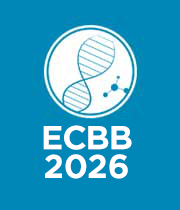Title: Plant Mirna applications and importance against sars-cov-2 genome
Abstract:
RNA interference is a post-transcriptional modification of gene silencing mechanism. It presents in a wide range of organisms like plants, fungi, both vertebrates and invertebrates and inside of the most important mammals. As short RNAi mechanism can apply by double-stranded short interfering RNA (siRNA) or microRNA (miRNA). These RNAs can sometimes prevent or sometimes degrade the translation of a targeted mRNA that contains complementary of the target. mRNAs are 20-25 nucleotides long, highly conserved, single-stranded non-coing RNAs. They can use gene regulation at the post-transcriptional level by interacting with the 3’untraslated region (3’UTRs) or to bind a specific region in open reading frames (ORFs) of target mRNAs. After binding miRNAs to 3’UTR’s of target genome, target mRNA degradate and the target protein can not translate.If the target is a virus, it means virus RNA translation or replication can be possible to degrade with miRNA applications. Coronavirus has a single strand RNA. This virus can infect humans and cause pandemic known as COVID 19. This illness genome SARS-CoV-2 is similar to mRNA genomes in structurals. It has 3’UTR and open reading frames (ORFs). mRNA applications try to bind COVID-19 genome at these parts of the genome. mRNA applications at virus genomes can apply by using different plant genomes. This process is known as host-virus-plant interactions. It is a kind of cross-kingdom interaction. A plant species' miRNA interacts with another species and then this plant miRNA uses to silence other species' genome. There are conserved parts at 3’UTRs of virus genomes. These parts use for silencing. SARS-CoV-2 genome has different conserved 3’UTR regions that match different plant miRNAs. In this study, these plant miRNAs will try to explain in which plants and sequences searched by bioinformatic studies. Besides edible nanoparticles (ENPs) and applications will explain. ENPs are bioavailable forms that filled with miRNAs. ENPs applications try to use as an alternative treatment for cross-kingdom interactions. Plant miRNAs have different databases. In this study will also explain which databases there are for plant miRNAs and which plant species they can use.
Audience Take Away Notes :
- RNA interferance mechanism
- What’s micro RNA, plant miRNAs and plant miRNAs virus interactions
- SARS-CoV-2 genome and importance of miRNAs for COVID19
- Plant miRNAs and COVID19 interactions
- Edible nanoparticles (ENPs) and applications
- Plant miRNA databases



